Home solar battery storage is becoming increasingly popular in Australia to reduce reliance on the grid, save money on electricity bills, and protect against power outages. As of early 2025, approximately 185,800 home battery systems have been installed across Australia, marking a significant surge in adoption. In 2024 alone, around 75,000 units were added, reflecting a 47% increase from the previous year.
In response to these dynamics, many Australian homeowners are embracing battery storage systems to optimise their energy consumption and reduce reliance on the grid. These systems enable households to store excess solar energy generated during the day and utilise it during peak demand hours or at night, thus enhancing energy self-sufficiency and potentially leading to substantial savings on electricity bills.
Moreover, government incentives, coupled with advancements in battery technology and decreasing installation costs, have fueled the rapid adoption of these systems. While challenges like the initial investment cost and system efficiency during extended cloudy periods remain, the trajectory of home battery storage in Australia points towards a more sustainable and resilient energy future.
As you explore the advancements in solar technology and the benefits of home solar battery storage, Energy Matters offers a seamless way to take the next step. Get FREE quotes now.
On this page
Some of the benefits of home solar battery storage
Reduce energy bills
Solar batteries can help you reduce energy bills by storing excess solar energy at night or during peak demand periods.
Increase self-sufficiency
Solar batteries can help you become more self-sufficient by allowing you to generate and store your own electricity
Provide backup power
Solar batteries can provide backup power during power outages.
Improve grid resilience
Solar batteries can help improve the electricity grid’s resilience by providing backup power during outages.
Battery specifications
Solar battery storage capacity
Battery capacity is the amount of energy a battery can store. It is measured in kilowatt-hours (kWh). The battery capacity you need will depend on your household’s energy needs, the size of your solar system, and your budget.
In Australia, the average battery capacity is between 10kWh and 14kWh. This is enough to store the energy generated by a 6.6kW to 10kW solar system on a sunny day. However, if you have a larger household or want to store energy for several days, you may need a larger battery.
Depth of discharge (DoD)
Depth of discharge (DoD) is the percentage of a battery’s capacity that is used before it is recharged. In Australia, the recommended DoD for deep cycle batteries is 50-70%. This means that a 100 amp hour battery should only be discharged to 50-70 amp hours before it is recharged. If a battery is discharged to a lower DoD, it will have a shorter lifespan.
A few factors can affect the DoD that can be used in Australia, such as the type of battery, the climate, and how the battery is used. For example, lead-acid batteries are typically discharged to a lower DoD than lithium-ion batteries. Batteries used in hot climates will also need to be discharged to a lower DoD than those used in cold climates. And batteries used for short bursts of power, such as starting a car, can typically be discharged to a lower DoD than batteries used for a steady stream of power, such as powering a solar panel system.
Power
The battery’s capacity to produce electricity is expressed in kilowatts. The battery’s maximum or peak power is its maximum output at any given time, but this power surge is typically only sustained for brief intervals. Continuous power is the quantity of power delivered when the battery is fully charged.
Lifespan (years or cycles)
Cycles or years (typically an estimate based on the projected usual usage of the battery) are two ways to rate the battery’s expected life (and its guarantee). The projected capacity level at death should also be included in the lifespan. This will typically be between 60 and 80 per cent of the original capacity for lithium batteries.
Efficiency
What the battery will actually store and discharge for every kWh of charge applied. Although there will always be some loss, a lithium battery should typically have an efficiency above 90%.
Unleash the potential of battery storage! Are you ready to transform the way you power your business or household? Say goodbye to rising electricity costs and unpredictable energy grids. The state-of-the-art battery systems empower you to maximise your energy efficiency, save money, and reduce your carbon footprint while enjoying an uninterrupted power supply.
Let us discuss and choose the best quote that suits your needs and budget, and we can connect you with our trusted local installers, who will provide up to 3 FREE quotes for your business solar and home solar battery system.
Types of solar batteries
- Lead-acid batteries are Australia’s most common type of battery. They are relatively inexpensive and have a long lifespan but lower energy density and efficiency than other types of batteries.
- Lithium-ion batteries are the most expensive type of battery but have the highest energy density and efficiency. They are a good choice for homeowners who want to maximise the amount of energy they can store from their solar panels.
- Flow batteries are a relatively new type of battery that is gaining popularity in Australia. They have a high energy density and efficiency and are also very scalable. This makes them a good choice for large-scale solar power projects.
- Sodium-nickel chloride batteries are a newer type of battery still under development. They have the potential to be more affordable than lithium-ion batteries while also having similar energy density and efficiency.
The best type of battery for you depends on your budget, needs, and location. A lead-acid battery may be a good choice if you are looking for an affordable and reliable option. A lithium-ion battery may be a better choice if you are looking for the most efficient and lightweight option. And if you are looking for a long-lasting and cost-effective option, a flow battery may be the best choice.
It is important to consult with a solar battery installer to determine which type of battery is right for you. They can help you assess your needs and budget and recommend the best solar battery for your home or business. Learn more: Best Solar Batteries in Australia.
Advantages of lithium-ion batteries
Lithium-ion batteries power all sorts of devices – power tools, notebook computers, tablets, cell phones and electric cars. They have distinct advantages over wet-cell lead acid batteries, such as in your car.
- Lighter
- Higher energy density
- Lower self-discharge
- Lower maintenance
- No “memory effect”
- Increased cycle life
Home energy battery storage comes of age
Lithium-ion based residential energy storage, including solar and battery systems, has been around for a couple of years. There are also open concepts that work with most battery technologies and any existing grid connect inverter, such as those manufactured by our recommended products.
How home battery energy storage systems work
At its most basic, new generation home energy storage, including solar and battery systems, is quite a simple concept but involves some very high-tech equipment.
Using the Tesla Powerwall battery system as an example, here’s how residential battery storage works.
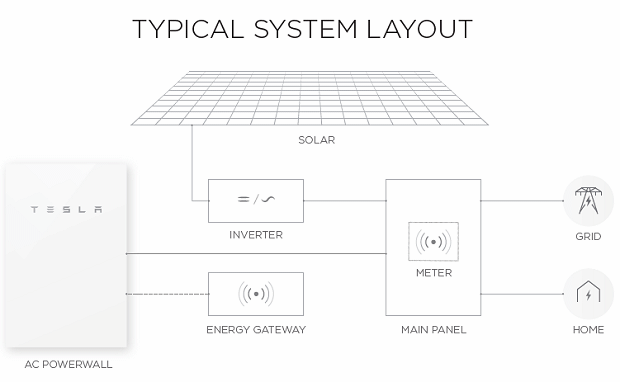
- Solar panels convert sunlight to DC (Direct Current) electricity.
- Any surplus DC electricity charges the Tesla Powerwall.
- The inverter converts the DC electricity to AC (Alternating Current) for use in the home.
- The inverter can also convert AC to DC to charge the Powerwall using cheap off-peak mains power.
The Powerwall 2 model for daily use is
- single and three-phase compatible;
- has a 14kWh capacity (13.2kWh usable) and 7kW peak / 5kW continuous output capacity.
- wall or floor mounted,
- a liquid thermal controlled unit weighing around 122kg – which is pretty impressive when compared to much heavier traditional deep cycle batteries.
With the Tesla Powerwall, multiple batteries may be installed together, stacked using a special mount. That capacity would provide the average Australian household with more than a couple of days of power supply purely from battery storage.
For most households however, outlaying for the cost of such a big storage system isn’t necessary considering grid power will still be available. For example, it will be there to act as a backup to a solar panel system in an extended heavy cloud event. Blackouts of more than a few hours are also becoming an increasingly rare event in Australia.
Home Solar Battery Storage Comparison Table
| Manufacturer | Product Logo | Product Image | Model | Type | Use | Battery Chemistry | Total Capacity | Useable Capacity | Power Output | Surge/Peak power | Warranty | Compatible inverters | |
|---|---|---|---|---|---|---|---|---|---|---|---|---|---|
| Enphase | 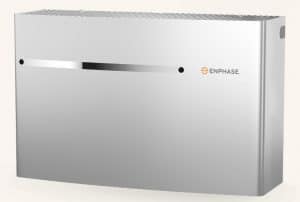
| IQ Battery 10 | AC coupled battery system | Back-up solar storage | Lithium LFP (LiFePO4) | 10.5kWh modular | 95% | 3.8kW per module | 5.7kW per module | 10years 80% EOL capacity | – | ||
| Fronius(BYD) | 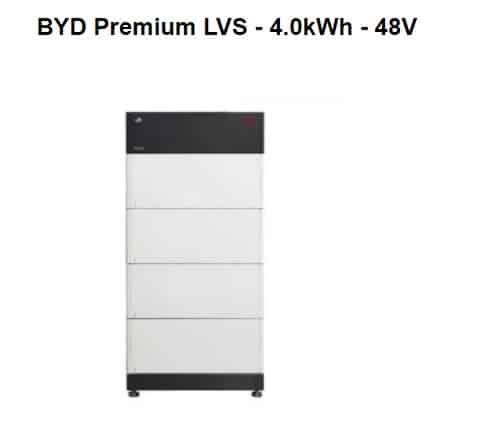
| BYD Battery-Box Premium LVS 4.0 | DC coupled battery system | Back-up solar storage | Lithium LFP (LiFePO4) | 4kWh modules up to 256kWh | 90 A (for 5 seconds) | 10years | Fronius inverters | ||||
| GoodWe | 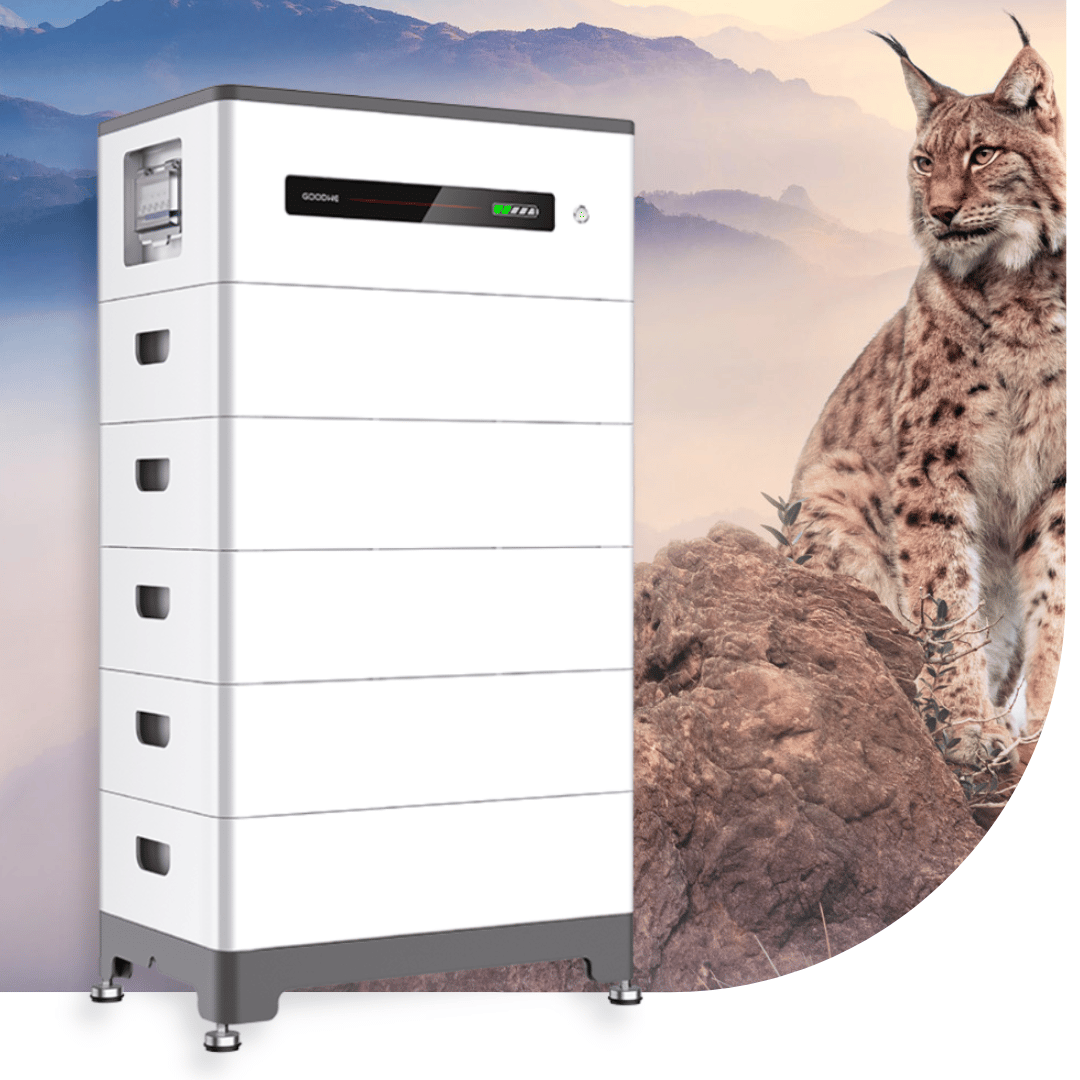
| Lynx Home U series | DC coupled battery system 48V | Back-up solar storage | Lithium LFP (LiFePO4) | 5.4kWh modules up to 34.2kWh | 90% | 2.5kW per module | 2.88kW per module | 10years 70% EOL capacity | GoodWe inverters only | ||
| Sigenergy | 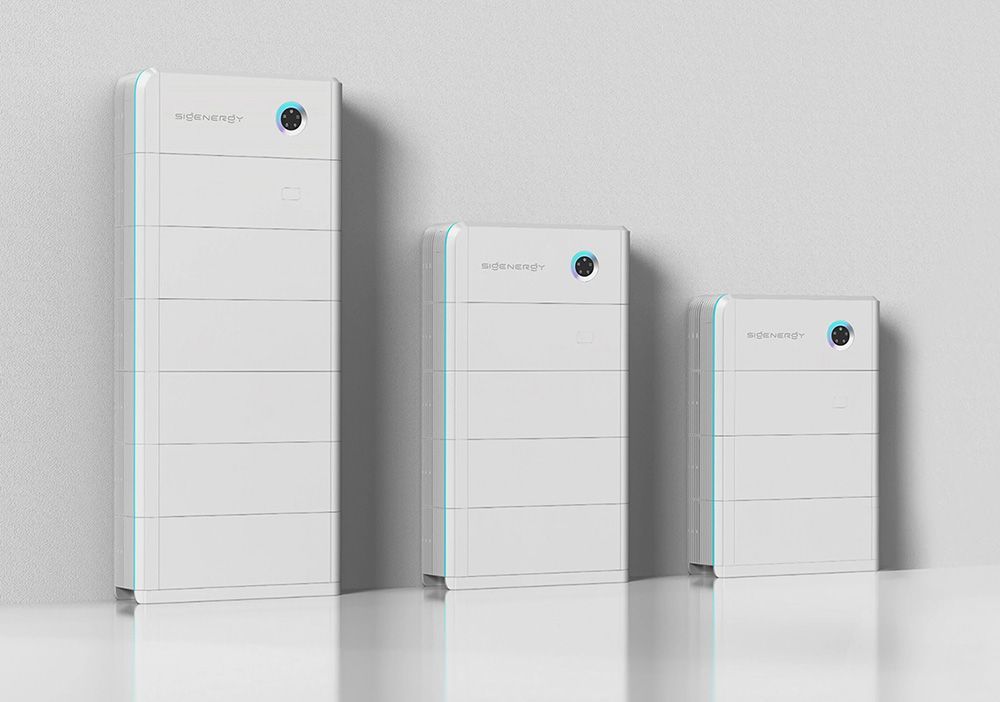
| SigenStor | DC coupled battery system | AI-optimized 5-in-one energy storage system | Lithium LFP (LiFePO4) | 5 or 8 kWh modules | 2.5kWh 4kWh | 3.75kW (10SEC) 6W (10SEC) | 10years | Sigenergy only | |||
| Sungrow | 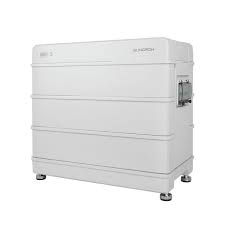
| ES-SGR-SBR | DC coupled battery system 192-512V | Back-up solar storage | Lithium LFP (LiFePO4) | 9.6kWh 3modules up to 25.6kWh | 100% | 1.92kW per module | 2.2kW per module | 10years 60% EOL capacity | Sungrow inverters only | ||
| Sungrow | 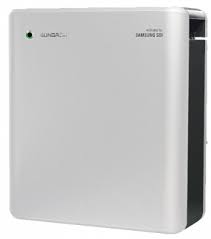
| SBP4K8 | DC coupled battery system 48V | Back-up solar storage | Lithium NMC | 4.8kWh | 90% | 3.0kW per module | 4.0kW per module | 10years 70% EOL capacity | Sungrow inverters only | ||
| SunPower |  | 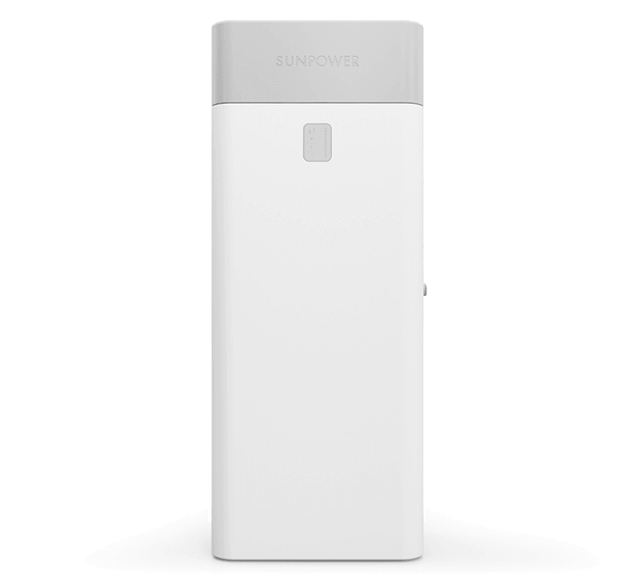
| SunVault | AC coupled battery system | Back-up solar storage | Lithium LFP (LiFePO4) | 13kWh 19.5kWh* 26kWh* 39kWh* | 90% | 6.8kWh 13.6kWh* | 8.5kW (10SEC) 17.0W (10SEC)* | 10years 80% EOL capacity | ||
| Tesla | 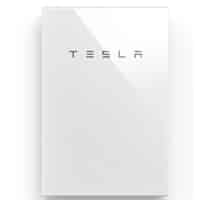
| Powerwall2 | AC coupled battery system | Back-up solar storage | Lithium NMC | 13.5kWh | 90% | 5.0kW | 7.0kW | 10years 70% EOL capacity | |||
| *Warranty – At the battery’s end of life (EOF), typically after 10 years, there must be a minimum retained capacity | |||||||||||||
Glossary
LFP (LiFePO4): LFP (Lithium Iron Phosphate) batteries are gaining traction due to their longer lifespan, faster charging, and superior safety compared to traditional lead-acid options. From solar power storage to recreational vehicles, their versatility makes them popular for homes and off-grid adventures.
Direct current (DC): DC refers to a constant flow of electricity in one direction, like the steady current from a battery, contrasting with the back-and-forth flow of alternating current (AC) found in household outlets.
Alternating current (AC): AC describes electricity that constantly changes direction, unlike direct current (DC), which flows steadily in one way. This characteristic allows for efficient power transmission and is the type of electricity commonly used in homes and businesses.
AC coupled: AC coupled refers to connecting solar panels or batteries to the existing AC grid through an inverter, allowing for flexible energy management and potential grid independence but often requiring additional equipment and expertise compared to DC (direct current) coupled systems.
DC coupled: DC coupled refers to connecting a home battery directly to the DC (direct current) output of solar panels, offering higher efficiency and potential cost savings compared to the more common AC (alternating current) coupling method, but with regulatory limitations and less widespread adoption.
EOL capacity: End-of-life capacity refers to the remaining storage ability of a battery after it reaches its end of life, usually defined as 80% of its original capacity, although it may still be usable for less demanding applications.
kWh: A kilowatt-hour (kWh) measures the amount of energy used when a 1,000-watt appliance runs for one hour. It is commonly used on electricity bills to track your energy consumption. Learn more about kW, kWh And Kilowatt/hour: What Do They Mean?
Lithium NMC: Lithium NMC, short for Lithium Nickel Manganese Cobalt Oxide, is a type of cathode material used in lithium-ion batteries, offering high energy density for applications like electric vehicles but with drawbacks like thermal instability and reliance on cobalt.
Australian solar battery standards: Ensuring safety and performance
Australian solar battery systems are governed by a set of rigorous standards, primarily AS/NZS 5033 for solar panels and AS/NZS 5139 for batteries. These standards cover installation, safety, and performance, guaranteeing quality and protecting consumers from potential hazards. Adhering to these regulations ensures your battery system operates optimally and safely, maximising your investment and peace of mind.
Does battery matter where you live? It depends!
While solar panels capture the sun’s energy, batteries offer backup and self-sufficiency. Whether this matters hinges on your priorities and location. Sun-drenched regions with frequent grid outages benefit greatly from batteries, storing excess energy for nighttime or emergencies. The cost-effectiveness might be lower in areas with reliable grids and less sunshine.
Consider your energy goals: maximising self-reliance, reducing bills, or preparing for outages. Research incentives and regulations in your area, as these can significantly impact costs and feasibility.
Ultimately, the decision depends on your specific needs and context. Consult local installers and compare costs with potential benefits before taking the plunge!
Open Homes Australia with a sustainable twist
Open Homes Australia, a lifestyle TV show, takes viewers on a tour of stunning contemporary homes, exploring innovative architecture, interior design, and the unique Australian way of life.
Featuring expert insights and design trends, the show also partners with Energy Matters. As a solar expert, our CEO, Roshan Ramnarain guide viewers on seamlessly incorporating solar panels and batteries into their homes, promoting sustainability and energy efficiency. Read more about Open Homes Australia Episode 4: GoodWe Showcases Solar, Battery, and EV Charging Technology.
State rebates for solar batteries work
State rebates for solar batteries can make installing a battery more affordable for homeowners and businesses. The rebate amount varies depending on the state and the type of battery system installed.
Homeowners and businesses must typically meet certain eligibility criteria to be eligible for a state rebate. For example, they may need to have a solar PV system already installed, or they may need to be located in a certain area. It is important to check with the relevant state government for more information on eligibility criteria and application processes.
State rebates can be a great way to save money on the cost of installing a battery system. They can also help to make solar batteries more accessible to homeowners and businesses that may not otherwise be able to afford them. If you are considering installing a battery, be sure to check with your state government to see if you are eligible for a rebate. Learn more about Solar Battery System Rebates, Subsidies, & Incentives.
Home solar battery systems and feed in tariffs
Whether the installation of a home energy storage system will affect your feed-in tariff payments will depend on the state you are located in. For many battery system owners, the issue of feed-in tariffs becomes a less important consideration considering they’ll be storing surplus energy.
Read more about feed-in-tariffs
Solar battery Virtual Power Plant (VPP)
A Virtual Power Plant (VPP) is a network of solar batteries centrally managed by software to provide energy to the grid during peak demand. VPPs allow renewable energy to be harnessed quickly, keeping the network stable and reducing reliance on fossil fuels.
Australia is a leading country in the development of VPPs. The South Australian government has partnered with Tesla to create the world’s largest VPP, with over 50,000 solar batteries. Other Australian states are also developing VPPs, and the Australian Energy Market Operator (AEMO) has set a target of 100,000 VPPs by 2025.
As the cost of solar and batteries continues to fall, VPPs are becoming more affordable and accessible. This is good news for Australia, as it means we can continue moving towards a cleaner and more sustainable energy future.
Here are some additional benefits of Solar Battery Virtual Power Plants (VPPs) in Australia:
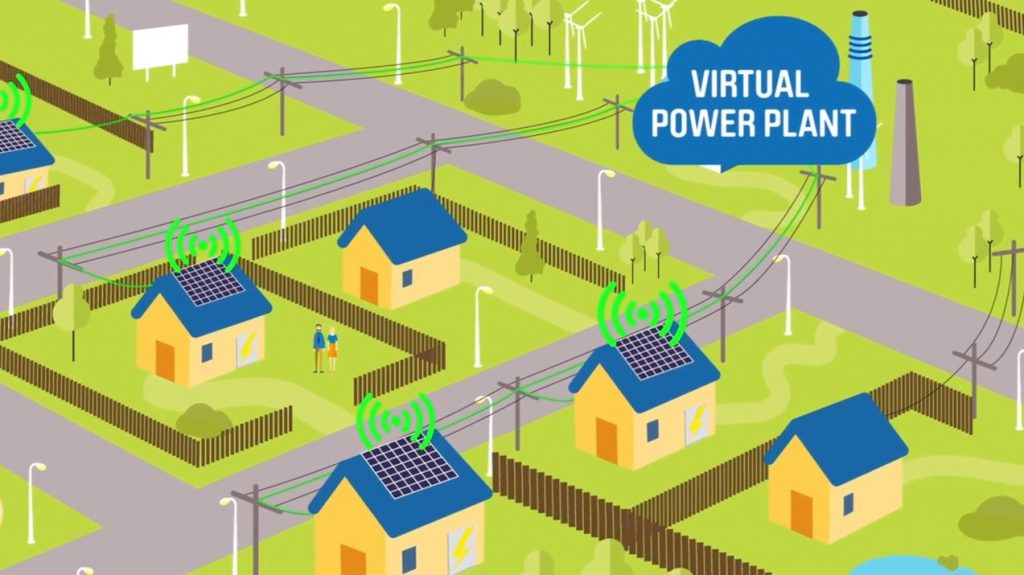
- They can help reduce the electricity cost for households and businesses.
- They can provide backup power during blackouts.
- They can help to improve the reliability of the electricity grid.
- They can reduce emissions and fight climate change.
- They can create jobs in the clean energy sector.
VPPs are a promising technology that has the potential to make a major difference in Australia’s energy future. Energy Matters encourage you to learn more about VPPs and how you can get involved. Learn more: How a Virtual Power Plant (VPP) Works and Virtual Power Plant (VPP) Offers in Australia.
Are solar batteries worth it?
Solar batteries in Australia offer a tempting promise: increased energy independence, lower bills, and reduced carbon footprint. However, the answer depends on your priorities.
While battery technology is improving and prices are slowly dropping, the upfront cost remains significant. Financially, it’s often a long-term investment with payback periods exceeding battery lifespans.
However, factors like rising energy prices, blackout protection, and environmental impact can tip the scales. Consider your energy usage patterns, tariff structure, and personal values. If self-reliance and sustainability are key, batteries might be worth exploring, especially with government incentives.
A thorough assessment of your needs and the current market landscape is crucial before deciding if solar batteries fit your Australian home and business. Read more about: Is It Worth Buying a Solar Battery or Will Prices Come Down More?
Solar battery prices: Sunny savings, but cloudy costs?
While the sun shines bright on Australian rooftops, battery prices remain a mixed bag. Expect to pay around $1,200 per kWh, with popular options ranging from $8,750 to $15,500.
Bigger batteries offer better value, but financing and installation add to the cost. Consider lithium iron phosphate (LFP) batteries for a budget-friendly option, but remember, warranties and daily cycles matter. So, while solar batteries offer self-reliance and potential savings, careful research is key to navigating the cost landscape.
Power outages? No sweat! Blackout protection with batteries
Facing frequent blackouts? Australians can now harness the sun’s power for peace of mind with solar battery systems featuring blackout protection. These systems seamlessly switch to battery power during outages, keeping essential appliances running and lights on, offering convenience and energy independence. Enjoy uninterrupted power from fridges to medical equipment and explore a more resilient future with battery backup.
Battery savings & payback: Sunny outlook, but consider the tariff
While batteries offer blackout protection and energy independence, their financial payback depends heavily on your location and electricity plan.
In states with time-of-use tariffs, batteries can pay for themselves in 6-10 years, but the wait could stretch to 15 years or more in flat-rate areas. Consider using online calculators and seeking expert advice to weigh the costs, savings, and potential future benefits before making a decision. Energy Matters can help you make an informed decision and the perfect option on the suitability of a solar battery with our Solar Power and Battery Storage Calculator.
Aussie homes looking to harness the sun’s energy often face the question: what size battery do I need? Sizes typically range from 5kWh to 20kWh, with 10kWh being popular. This sweet spot balances affordability with storing enough energy to cover evening and night usage, maximising self-reliance and potentially reducing grid reliance.
However, the ideal size depends on your household’s energy consumption and desired level of independence, so consulting a solar specialist is key to finding the perfect fit for your sun-powered dreams. Read more about What Size Battery Do I Need For My Solar System?
You could reduce your grid electricity consumption by 80% with a solar + battery system, which includes the battery price. That is based on standard system installation in Sydney.
Your home will require an assessment and any savings will depend on your actual individual circumstances (which may vary over time).
If you’re curious about getting a rough idea as to how much you could reduce your reliance on electricity companies through implementing a solar + storage solution, try our new online calculator.
It’s very easy to use. Just enter your latest bill cost or average daily consumption, input your town or suburb and choose from a wide range of systems to base the calculations on.
Choosing Australia’s “best” solar battery brand depends heavily on your needs and budget. Leading competitors like Tesla Powerwall, sonnen Hybrid 9.53, Enphase IQ, LG Chem RESU, BYD Premium LVS/LV and Sungrow SBR battery offer reliable lithium-ion options and power output.
Consider factors like capacity, warranty, compatibility, and installer support before making your decision.
Remember, consulting a qualified solar installer is crucial for finding the perfect battery fit for your home. Read more about Best Solar Battery Australia 2024.
The answer to this question depends on a number of factors, including your energy usage habits, the size of your solar system, and the cost of the battery. Solar batteries can be a good way to store excess solar energy and use it later, which can help you reduce your reliance on the grid and save money on your electricity bills. However, they are also a significant upfront investment.
Solar batteries are more likely to be worth it for households with high electricity bills and a large solar system. They are also a good option for households concerned about blackouts or wanting to reduce their carbon emissions.
If you are considering installing a solar battery, it is important to research and compare different options. You should also factor in the battery cost, the installation cost, and the expected savings over time.
Residential solar storage batteries typically last between 5 and 15 years, with lithium-ion batteries offering the longest lifespans. The exact duration depends on factors like battery type, depth of discharge, and environmental conditions. Choosing a high-quality battery with a strong warranty and practising proper maintenance can help maximise its lifespan. Read more about How Long Do Solar Storage Batteries Last in 2023?
While the allure of self-sufficiency and environmental responsibility is strong, going off-grid in Australia demands careful planning. Consider your budget, skills, and desired level of comfort.
Abundant sunshine makes solar power viable, but remote locations may require backup generators and water management systems. Before making the leap, weigh the potential cost savings and environmental benefits against resourcefulness and potential isolation challenges. Read more about Decoding Off-Grid Living for Renewable Energy in Australia.
The size of battery you need for a 6.6 kW solar system in Australia will depend on many factors, including your average daily electricity consumption, the amount of solar energy you generate, and your desired level of self-consumption.
As a general rule of thumb, a battery with a storage capacity of 10 kWh can be a good starting point for a 6.6 kW solar system. This would allow you to store enough energy to power your home for around 12 hours on a cloudy day.
If you have a high daily electricity consumption or want to store more energy for backup purposes, you may need a larger battery. Conversely, if you have a low daily electricity consumption or are happy to rely on the grid for backup power, you may get away with a smaller battery.
It is important to consult with a solar installer to determine the best-sized battery for your needs. They will be able to assess your individual circumstances and recommend a system that is right for you.
The cost of a 5kW battery can vary depending on several factors, including brand, model, system complexity, and installation costs. However, a typical range falls between $6,000 and $12,000.
It’s crucial to obtain solar quotes from multiple reputable solar installers to get the most accurate pricing for your specific needs. Remember, government rebates and incentives can significantly reduce the upfront cost, making solar batteries a more affordable option for many homeowners and businesses.
While a 5kW battery offers significant solar power storage in Australia, it may not fully power your house. The key factor lies in your daily energy consumption. If your household uses an average amount (around 16kWh daily), a 5kW battery might cover essential needs during sunlight hours.
However, a larger battery capacity or additional solar panels might be necessary for larger homes or heavier energy users for complete off-grid coverage. Consult a solar specialist to assess your needs and ensure optimal system design.
The average cost of a 6kW battery in Australia is around $7,500, including GST. However, the exact cost can vary depending on a number of factors, including the battery type, brand, manufacturer, installer, and other factors. Solar batteries generally cost around $1,000 to $2,000 per kilowatt hour (kWh) of storage capacity in Australia. For example, for a 4kWh battery, you’ll spend between $4,000 to $8,000.
The cost of a 6kW battery can also be affected by the availability of government rebates and incentives. In Australia, the federal government offers a rebate of up to $4,000 to purchase and install a battery. Some states and territories also offer their own rebates or incentives.
If you are considering installing a battery, getting quotes from several different installers is important to get the best possible price. You should also factor in the cost of installation when comparing prices.
Here are some of the factors that can affect the cost of a 6kW battery in Australia:
- Battery type: The type of battery, such as lithium-ion or lead-acid, will affect the cost. Lithium-ion batteries are more expensive but also have a longer lifespan.
- Brand: The brand of the battery can also affect the cost. Some brands are more expensive than others.
- Manufacturer: The manufacturer of the battery can also affect the cost. Some manufacturers are more expensive than others.
- Installer: The installer will charge a fee for installing the battery. The cost of installation can vary depending on the installer.
- Other factors: Other factors that can affect the cost of a 6kW battery include the size of the battery, the warranty, and the availability of government rebates and incentives.
The cost of a 10kW battery in Australia can vary depending on factors like brand, model, and installation complexity but typically ranges between $8,000 and $15,000. Getting solar quotes from several reputable solar installers is important to get the most accurate pricing for your needs.
A 10 kWh battery can provide backup power for 10-12 hours during an outage, assuming an average household uses 750-1000W. However, this runtime heavily depends on your specific energy consumption. Running high-power appliances like air conditioners will significantly reduce the battery life.
Consider conducting an energy audit to determine your typical usage and consult with a solar installer to factor in your local climate and panel efficiency for a more precise estimate.
While Australia currently has limited lithium-ion battery recycling capabilities, responsibly disposing of them is still possible. Check with your local council or battery retailer for safe drop-off points, as proper recycling helps conserve resources and protects the environment. Although the technology is evolving, remember that even partially spent batteries hold valuable materials that can be recovered for future use.
Choosing Australia’s “best” solar battery brand depends heavily on your needs and budget. Leading competitors like Tesla Powerwall, sonnen Hybrid 9.53, Enphase IQ, LG Chem RESU, BYD Premium LVS/LV and Sungrow SBR battery offer reliable lithium-ion options and power output.
Consider factors like capacity, warranty, compatibility, and installer support before making your decision.
Remember, consulting a qualified solar installer is crucial for finding the perfect battery fit for your home. Read more about Best Solar Battery Australia 2024.
Grandfathered in 40c+ feed-in tariff? Hold onto your solar panels! Batteries might be worth it later. While tempting to maximise self-consumption, current battery prices struggle to compete with your high buyback rate.
However, consider future-proofing: battery costs are falling, and your tariff won’t last forever. Talk to a solar specialist to weigh your options.
While having 3-phase power unlocks higher capacity, a 3-phase battery isn’t always necessary. Standard single-phase batteries can often handle most household needs, especially if your main goal is self-sufficiency or backup power.
However, if you have high energy demands, run heavy machinery, or have a large commercial property, a 3-phase battery can offer significant advantages like faster charging, higher power output, and better load balancing. Consider your energy consumption and consult a solar installer for expert advice on the best battery solution for your 3-phase setup.
A “Battery-Ready” solar system is a grid-connected setup designed for easy future integration with battery storage. This means specific components, like a compatible inverter, are pre-installed, allowing a seamless upgrade to a “hybrid” system when you’re ready to maximise solar self-consumption and gain backup power during outages.
While convenient, consider your current needs and future plans before investing, as battery technology is rapidly evolving and direct AC coupling might be a viable alternative depending on your chosen battery system.
While most Australian home insurance policies cover solar panels, coverage for home batteries is rare. Some insurers offer it as an add-on, while others may include it under specific circumstances. Always check your policy details and discuss your battery system with your insurer to ensure adequate protection.
According to the Australian Competition & Consumer Commission (ACCC), while rare, some solar batteries in Australia, particularly specific LG models manufactured between 2017 and 2018, have been recalled due to a fire risk. These batteries can overheat and ignite, posing a safety hazard.
If you have a solar system, it’s crucial to check if your battery is affected by a recall and contact the manufacturer immediately for replacement or removal. Remember, proper solar system installation and maintenance are key to minimising potential risks. Always prioritise safety and consult professionals if you have concerns.
You could reduce your grid electricity consumption by 80% with a solar + battery system, which includes the solar battery price. That is based on standard system installation in Sydney.
Your home will require an assessment and any savings will depend on your actual individual circumstances (which may vary over time).
If you’re curious about getting a rough idea as to how much you could reduce your reliance on electricity companies through implementing a solar + storage solution, try our new online calculator.
It’s very easy to use. Just enter your latest bill cost or average daily consumption, input your town or suburb and choose from a wide range of systems to base the calculations on.
Energy Matters recommends cost-effective home battery storage systems such as:
If you’re considering going solar but buying home battery storage in the future, acquiring a battery-ready or upgradeable system is important; one that includes an energy monitor – chat with our storage experts about your needs by calling 1800 EMATTERS (1800 362 883).
Thinking solar? Think ahead

Learn more about battery ready solar power systems.
It’s important to think ahead when buying solar. Install a battery-ready system of suitable size if your ultimate goal is to add energy storage. Not all solar system will be easily upgradeable.
A battery compatible solar power system is more than just about components – it’s also about positioning and wiring. Few solar installers have this knowledge currently, but the Energy Matters team does.
Go solar now – Or wait?
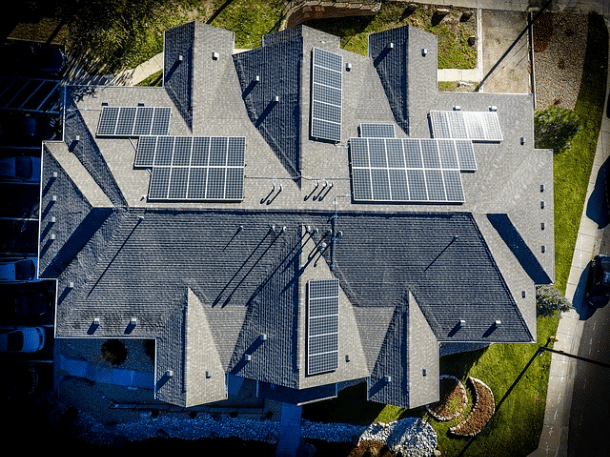
There is a very important potential benefit of going solar now with a battery-upgradeable system related to subsidies.
The subsidisation of solar power systems is based on renewable energy certificates (known as Small scale Technology Certificates these days – STCs and Large-Scale Generation Certificates-LGCs). The value of these certificates fluctuates with market conditions. Currently, their value is quite high. However, as we’ve seen in the past, the price can plummet, leading to a significant decrease in the amount of subsidisation of a system!
Regardless of market value, current subsidy levels will be reduced in the not-too-distant future.
The other major advantages of installing solar now instead of waiting are you’ll start saving on electricity bills sooner, improve energy efficiency, and be well on the way to creating a smart home.
Save today and store tomorrow!
Are you looking to go solar? Solar energy is the perfect solution! Energy Matters can help you get up to 3 FREE quotes from pre-qualified and vetted solar firms in your area.
With Energy Matters, you can be sure you’re getting the best possible deal on solar energy. We only work with reputable solar firms with a proven track record of delivering high-quality solar systems.











































